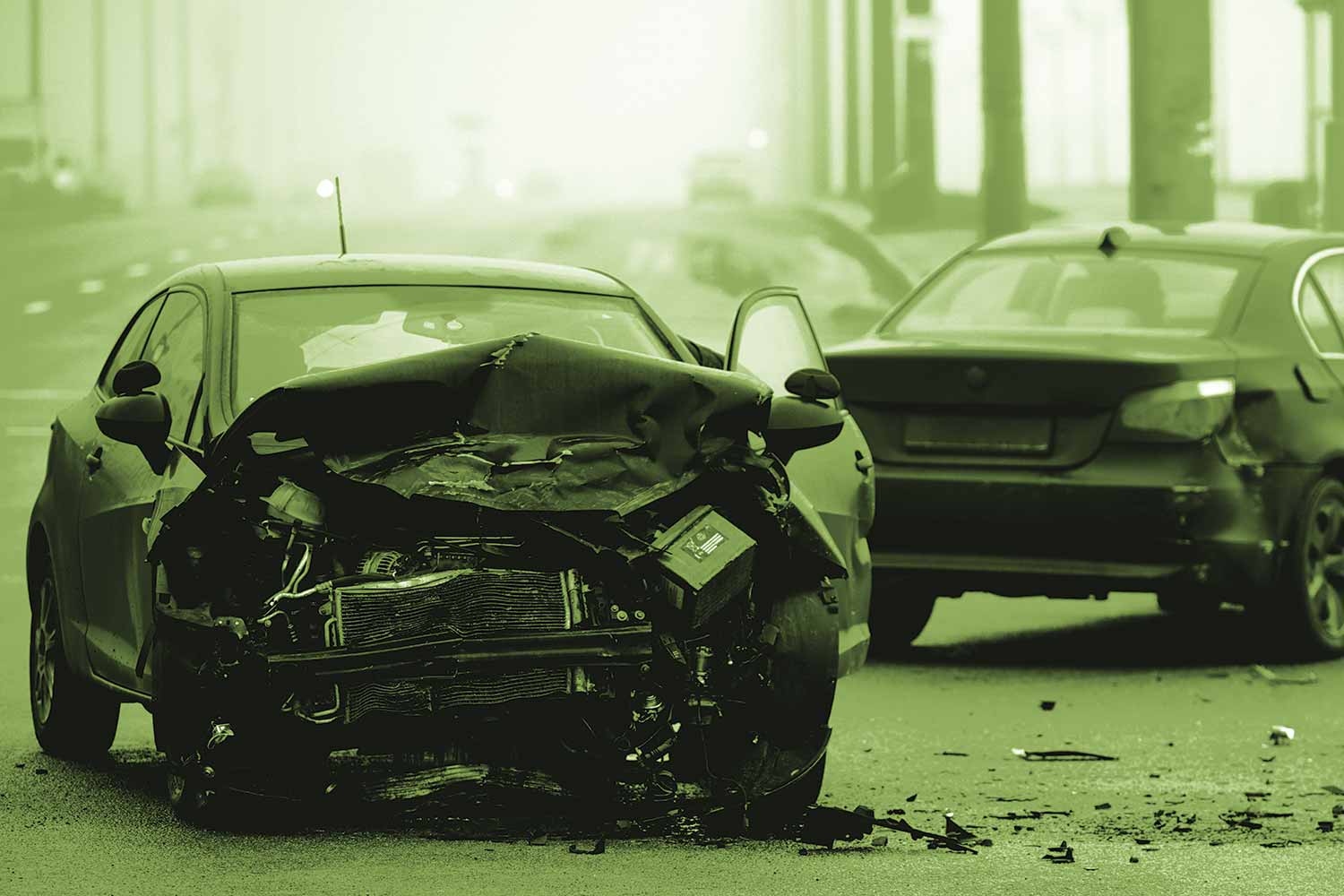Bridging the Gap
PICTURED ABOVE
The Department of Criminal Justice Training will offer a new class designed to bridge the gap between the basic-training-level collision investigation course and an accident-reconstruction investigator course. The collision investigation course will be taught seven times at various locations in 2020. (Photo courtesy Boone County Sheriff’s Office)
A new class designed to bridge the gap between the basic-training-level collision investigation course and a full-blown accident-reconstruction investigator course will be taught at the Department of Criminal Justice Training next year.
The 40-hour course will be taught seven times in 2020 at various locations throughout Kentucky, according to Special Topics Section Supervisor Larry Sennett.
“This class is for the officer who first arrives at the scene, and he or she notices that (the incident) could be more involved than just a regular fender-bender,” Sennett said.
Three Forms of Documentation
The course will cover many aspects of collision investigations, said Law Enforcement Instructor Charles Nichols.
“The way I envision this class going is this: If you don’t have an accident reconstructionist available, we’re going to give the officer enough information so a reconstructionist can take that information and run with it,” Nichols said. “This isn’t going to be math-heavy, mostly division. There’s going to be a couple of things we do to get the coefficient of friction off the roadway or whatever surface they’re on. That’s all the math we’re going to do. But we’re going to document enough so that when an accident reconstructionist comes in, (the officer) has documented everything, and they’d have all the information they would need.”
The three forms of documentation (written notes, sketches and photographs) are among the topics discussed during the week, Nichols said.
“We’re going to break those down specifically for collision scenes,” Nichols said. “We’re going to start with the series of the event – what happens before the collision. We’re going to look at the evidence at the scene. That will include the most common such as the skid marks, scrapes and gouges, everything down to the debris in the roadway. You can determine a lot from the debris in the roadway.”
Holding a middle-ground course between basic-training-level collision investigations and accident-reconstruction will be a welcomed addition, Boone County Sheriff’s Office Lt. Chris Hall said.
“I think that’s a fantastic idea,” said Hall, who serves as BCSO’s accident reconstruction supervisor. “We go through a lot of training to be reconstructionists. I’m looking at several things. Were there engineering issues here? Was it weather or cell phone use? Or maybe mechanical issues or impairment. There are so many factors in play that a road guy doesn’t understand. So if we can bridge that gap and have them understand a little bit about it, then by all means.”
Photography Challenges
There are many challenges regarding collision investigations, with perhaps one of the most significant being photography, Nichols said.
“We will have a big section on photography,” he explained. “Collision-scene photography is probably the hardest photography you will do because you’re looking at something larger than a typical crime scene. If you’re out on the interstate, you’ll find that vehicles carry a long distance in a collision. It’s tough to capture all of that in one photo.”
Not every collision-investigation will happen during daylight hours, and the course will address that.
“At night, the roadway can be hard to light up, so there are some techniques we’re going to do called painting with light and time-lapse photography. Those things will help,” Nichols said. “Most people don’t have 15 or 16 flashes they can set up in a line to light up the whole scene at once. We will show them some techniques that will help in those situations.”
Agencies without Reconstruction Teams
Many smaller agencies across the state do not have collision or accident reconstruction teams, Nichols said. The course will empower those agencies in collision investigations.
“Most agencies don’t have a reconstructionist. However, if they work a collision with all of this information, they can call Kentucky State Police and hand off the information, and KSP can start the reconstruction process based on the report,” he continued. “When you have a DUI-involved collision, many times they don’t have their headlights on. I am going to show them how to determine if they were on or off. When the light bulbs are on, there’s a filament, and it gets very hot. Therefore, in a collision, it will stretch out. If they were off, it would be a clean break. It’s something to look at. It’s an indication that the lights were not on, which could be the cause of the wreck. You have to document that.”
The course is new territory, Sennett said, and it will benefit every agency, no matter the organization’s size.
“This is like a basic crime scene investigation course,” he said. “We’ve never done a class looking at it from this angle. We’re not doing reconstruction, but there will be something in this class that an officer can look at, recognize, document and take measurements.”
Moreover, the course will discuss resources available to agencies who need assistance, Nichols said.
“If you have a collision involving a semi-truck, most agencies don’t know they can call the Kentucky State Police’s Commercial Vehicle Enforcement. They will come out and inspect the vehicle at the scene,” Nichols said. “They will weigh the truck as they have mobile scales in their vehicles where they can throw it under the truck’s tires and weigh it on the spot. They will also inspect (the truck) because they’re certified to do such things.”
For information on the course, including description, dates and locations, visit kydocjt-portal.acadisonline.com.





